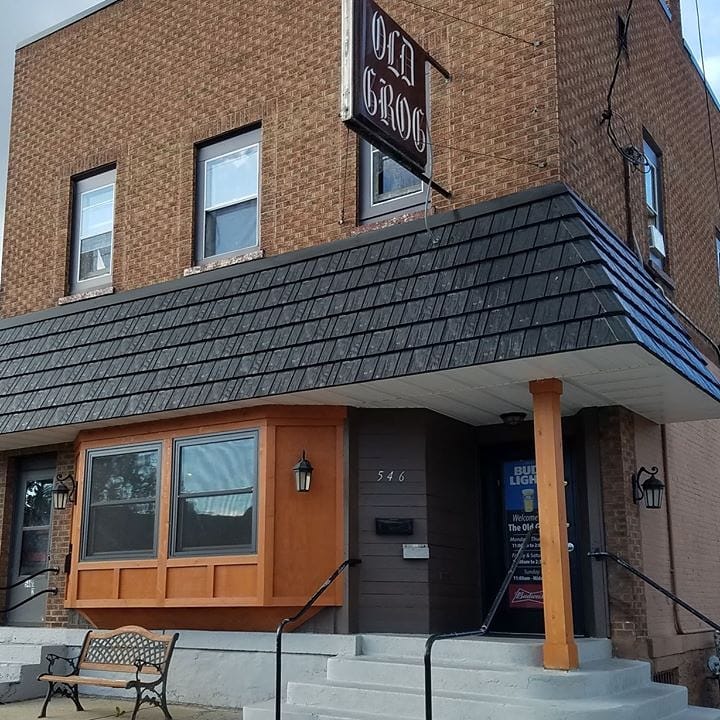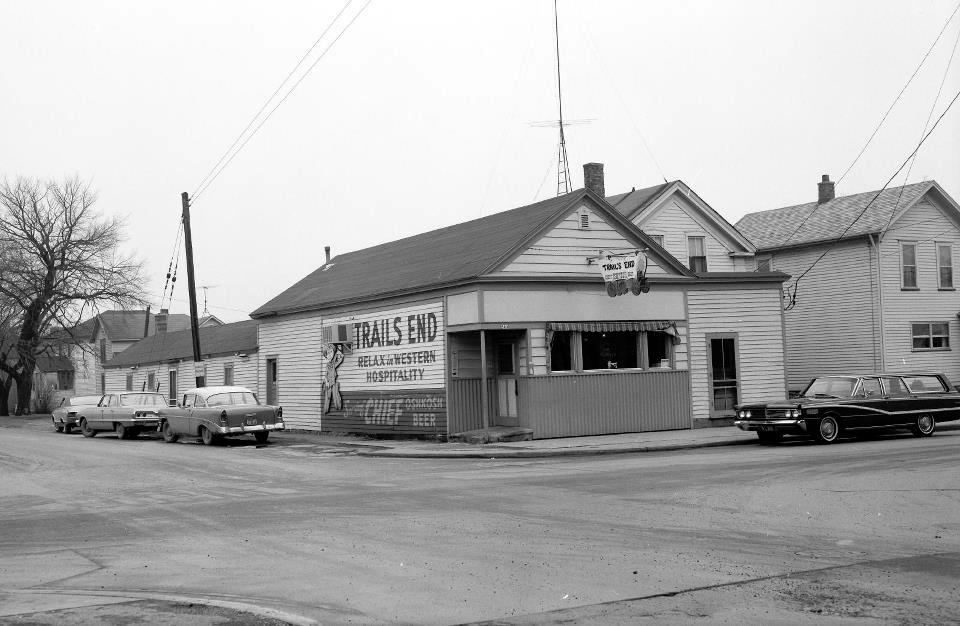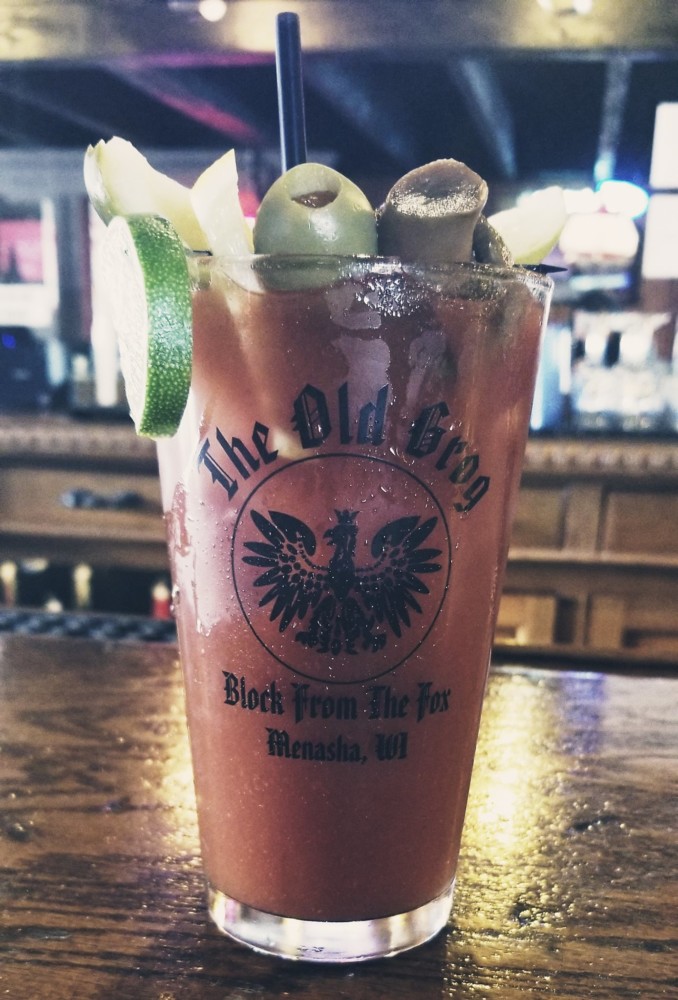Good Spirits
Camaraderie and culture thrive in the corner bars of the Fox Cities
The neighborhood bar, corner bar, or the local watering hole is nearly as old as the Fox Valley itself. Nearly everyone has one nearby, and after a long day of work, they’re a close-to-home destination to unwind, watch the game, and meet with friends.
“It’s a place where everybody gets to know everyone,” says Hank Grishaber. He’s referring to the bar he owns and operates in an East Appleton neighborhood, Hank & Karens.
Ann Spilski manages Jitters, a bar on the corner of Main and Tayco Street popular to neighborhoods in South Menasha. To her, the corner bar is full of inviting camaraderie distinct from the less personal glamor of trendy downtown bars.
“The bars on [College Avenue], they’re fun,” Spilski says, “but they’re not really a sit down and have a conversation type of atmosphere.”
In 2018, Rosita Eisenach took over her Menasha neighborhood favorite, The Old Grog, because she loved the bar’s history. She says a great corner bar combines great neighborhood stories, community and good spirits.
“You hear awesome stories from the old timers. It is just genuinely more laid back and comfortable … and you want to be a part of that,” Eisenbach says. “And don’t get me wrong, the food and drink prices help keep them coming in as well.”
The Neighborhood Bar: A Living History
People of every generation can recall that close-knit corner bar that’s been around forever, but you might not know just how old the tradition actually is. Each fall, The History Museum at the Castle Chief Curator Dustin Mack leads a walking tour across Appleton’s historic taverns, and it turns out that neighborhood bar culture owes its life to a 150-year history of loyal regulars relaxing after a hard day’s work.
However, at the outset the Fox Valley’s bar scene struggled to exist. Mack explains that Appleton’s first settlers came primarily from New England, who brought Puritan values and a staunch opposition to alcohol with them. Around 10 years later, in the early 1860s, the Fox Valley brought in German and Irish immigrants who had a culture of drinking – they quickly became the majority of Fox Citians.
“So there’s kind of a standoff between the dry immigrants from New England and the wet immigrants from Germany and Ireland,” Mack says.
With Appleton reigning supreme as America’s drunkest city more years than not, it’s no shock that the Puritans lost the prohibition war. According to Mack, “The majority kind of won out, and the Yankees gave up their threaded position on it.”
Meanwhile, by the 1870s industry was booming along the Fox River, bringing in a plethora of manufacturing jobs at the Atlas Paper Co., Vulcan Street hydroelectric plant, Courtney Woolen Mill and Kimberly-Clark, among others. As a result, the corner bars found a natural symbiosis with the Fox Valley’s manufacturing hub, bringing in a steady working-class clientele who spent their days hard at work and nights relaxing with a cold brew in a subdued atmosphere.
“It used to be where 80% of the people in the bars [worked] out in the paper mills, so the bar scene was always popular,” says Peter Kemps, Jitters owner.
Surrounding communities experienced a similar corner bar boom. For example, Bob Winkelman and Julia Feldner run the longtime Oshkosh bar Bob’s Trails End, which was a short walk down the street from Universal Motors (later called Medalist Industry), an engine manufacturer which brought in bar regulars for much of the 20th century.
“Medalist industry, those guys used to come in every Monday,” says Feldner.
Many of the same bars from decades past are still around today. They might have different names, but today’s owners carry on the old traditions. The Old Grog got its name in 1975, but the concept comes from the Burroughs House hotel, established in 1850, which offered restaurant services. Hank and Karen’s was a bar called Pase’s in the early 20th century, which Grishaber’s parents operated between the 1940s and ‘60s. Bob’s Trails End was known as Van’s Tavern in the 1920s and was a rooming house and café prior to that. And according to the Menasha Historical Society, Jitters was Menasha’s first bar, established in the early 1900s.
“I kept the traditional atmosphere,” Kemps says about Jitters. Spilski adds that Jitters has always been “a place to sit around with friends and socialize and talk. Any time [Menashans] come in, they’re gonna recognize people … that have been coming here for 30, 40, 50 years. We’re surrounded by the history of Menasha.”
Time-honored Bar Traditions

The Old Grog bingo loyalty card gets patrons a discount on each bingo and a chance to win prizes on a blackout.
For popular neighborhood bars, tradition is a key part of why people keep coming back, both through the bars’ menus and their nostalgic histories.
Trails End, for example, is best known for its chili dogs, and according to Feldner, they’ve been around since 1926 and enjoyed among not just bar patrons, but people across the state.
“[Train depot workers] would call from Green Bay and they’d say, ‘We need 100 hot dogs,’ and they would put them in a mailbag … and then sell them on the train.”
Winkel was careful to keep the recipe 100% authentic after the previous owner used a different recipe from the one made in 1926.
“You never mess with something like that,” Feldner says. “When Bob bought it, he had [the hot dog maker] who used to work here a billion years ago show Bob exactly how to do it.”
Hank and Karens follows the age-old bar tradition of naming menu items after the regulars, from the jalapeno-topped Bobby D Burger to the Bear Burger, always cooked rare.
“One of our past customers – his name was Bear – always wanted a hamburger rare. Very rare. So we called it the Bear Burger,” Grishaber says.
And it wouldn’t be a corner bar without classic bar games. The Old Grog does shake-a-day, a popular Wisconsin game that stretches back to the end of Prohibition. The goal is to roll five-of-a-kind to win prizes – for the Grog, this includes snacks and drinks or larger prizes which have included anything from gift cards to snowblowers. But Eisenach likes to shake up the traditions with new games as well.
“One thing we have that people crave over is our spin wheel,” Eisenach says. “You pay a dollar and we literally spin a wheel. Whatever you land on is the prize.”
An Industry in Change
The symbiotic relationship corner bars enjoy with nearby neighborhoods and places of work can also be a double-edged sword. For bar owners, the shutdown of a business or people moving out of the neighborhood can mean losing regular customers.
In 2018, renovating The Howard in Oshkosh was a win for local architectural history but a challenge for Trails End. The Howard is located one block south of Trails End on Washington Avenue.
“Our neighborhood has changed considerably,” Feldner says, “The Howard ripped down all those houses down there. Those were all our customers.”
Bar owners – especially those situated around the Menasha Lock – experienced a change in clientele in a decades-long nationwide manufacturing decline. Data from the Department of Workforce Development reveals Wisconsin’s 51,000 pulp and paper jobs in the 1990s contracted to 30,600 by 2018. Most notably, the 122-year-old Atlas Paper Co. mill closed in 2000, while Kimberly-Clark downsized its workforce by 13%.
“It’s a different crowd,” Kemps says. “People wanted to get out of a hard day of working at the mills, but now in Menasha, two-thirds of the mills have closed down or moved away.”
“We still get some mill workers,” according to Kemps, but the traditional relationship between manufacturing workers and corner bars like Jitters is in decline, whether because bar regulars have entered new fields or because their choice bar ceased to be a convenient, on-the-way-home stop.
Evolving by Staying the Same
Like most industries, neighborhood bars have confronted their share of setbacks, but even though regulars and their occupations change, their nostalgic after-work bar crawl is here to stay.
“It’s a continuous rotation, you know, as people grow older,” Feldner says. “We still have regulars or people that live kind of close by and they come for a place where they can just relax and have fun.”
“We have a very nice variety of people from the age of 21 up to 90 up the night, 90 years old,” Grishaber says, pointing out the mixed-aged neighborhood clientele that’s beginning to appeal to a new generation.
While many might associate the local watering hole with older generations, Feldner says the downbeat atmosphere of corner bars is appealing to all ages, describing a young group of Trails End regulars disillusioned by the fast pace of modern bars.
“They had gone to those different places over there. And one place where [the bartenders] never even talked to them. And then there was another place that it was just all hoity toity,” Feldner says. “They’re just regular young men. They’re here to relax afterward, have a … couple of beers. They came in here like, we finally found a place that’s home. And they came back.”
Spilski’s approach to managing Jitters is to make everyone feel welcome, appealing to older and younger Fox Citians in and out of the neighborhood.
“We have quite a variety,” Spilski says, “and [regulars] are always willing to share, like, their favorite restaurant to go to nearby or their favorite things to do. I just love that. They’re really nice to other people.”
For the timeless neighborhood bars that have brought in regulars for generations, change is an inevitable part of the process, but often, bar owners find that the best way to change is to stay the same.
“We have the oldest jukebox in America,” Feldner jokes. “They keep trying to push us into the iTunes and all that junk. Well, it doesn’t fit here. You can’t have an old neighborhood and then put in an iTunes machine.”













Leave a Comment